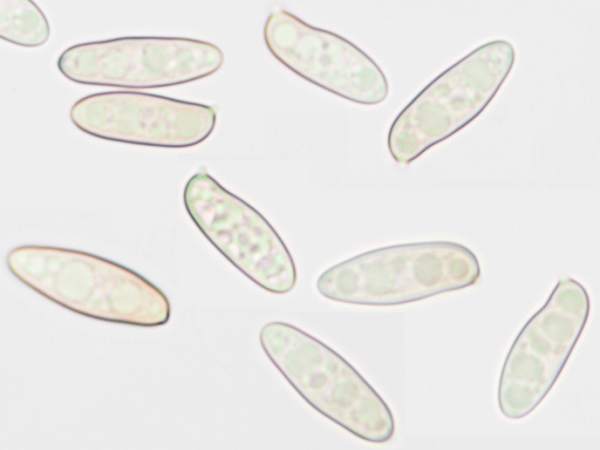Xerocomellus pruinatus Fr. & Hök - Matt Bolete
Phylum: Basidiomycota - Class: Agaricomycetes - Order: Boletales - Family: Boletaceae
Distribution - Taxonomic History- Etymology - Identification - Culinary Notes - Reference Sources
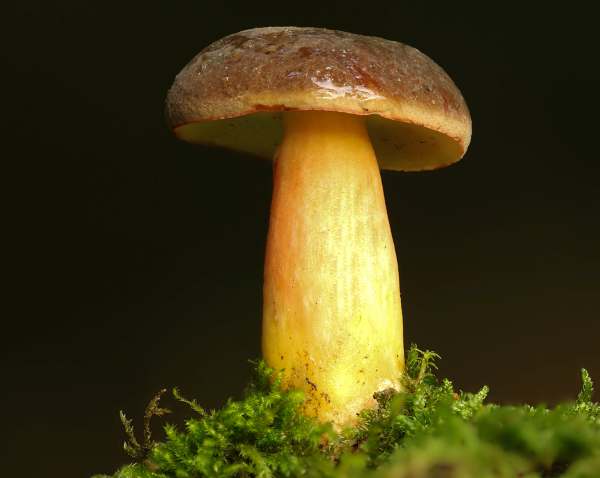
Easily mistaken for a young Red Cracking Bolete (Boletus chrysenteron), the Matt Bolete, Boletus pruinatus occurs in similar habitats. This very missable mushroom is distinguished by its cap, which is usually slightly convex and covered in a fine bloom that may remain when fully expanded.
Distribution
Unfortunately this bolete is quite rare in Britain and Ireland; it shows a marked preference for alkaline (chalky or lime-rich) soils.
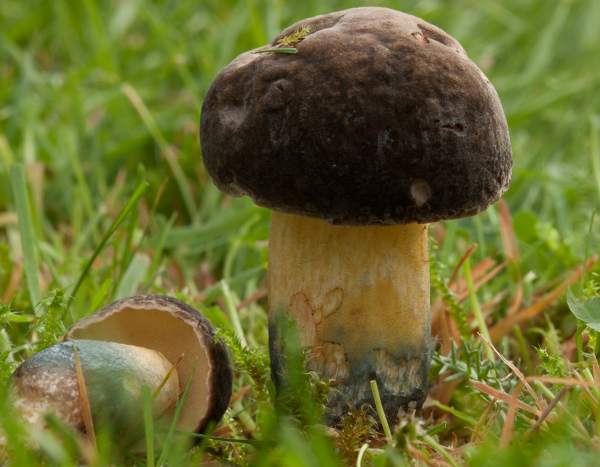
The cap colour is of limited help when trying to identify boletes, and those of the 'Xerocomid' persuasion in particular. In the case of the Matt Bolete the cap colour ranges from light brown to dark chestnut brown but may be a greyish brown, olivaceous brown, reddish brown, or in some instances such a dark grey that it appears black.
The surface of the cap is one of the key identifying macroscopic features of Boletus pruinatus; it is dry, and either finely velvety or finely dusted (pruinose!). Unlike Boletus chrysenteron, the Red Cracking Bolete, Boletus pruinatus caps rarely crack, but when they do the flesh that shows through is yellow rather than red.
The beautiful specimens shown above were found in the New Forest in southern England and photographed by David Kelly, with whose kind permission they are shown here.
Taxonomic history
Until 2008, the scientific name Boletus pruinatus was generally used when refering to the Matt Bolete; it dated from the publication of the 1835 thesis Boleti, fungorum generis, illustratio, by Elias Magnus Fries and Fredrik Christopher Theodor Hök (1807 - 1877). The currently-accepted scientific name Xerocomellus pruinatus dates from a 2008 publication by Czech mycologist Josef Šutara, whose studied in detail morphological character os this and other closely-related boletes - since further supported by DNA studies.
Synonyms of Xerocomellus pruinatus include Xerocomus pruinatus var. luteocarnosus (Klofac & Krisai), Xerocomus pruinatus (Fr. & Hök) Quél., and Boletus pruinatus Fr. & Hök.
Etymology
The generic name Boletus comes from the Greek bolos, meaning 'lump of clay'; the specific epithet pruinatus means 'with a fine bloom', or frosted.
Identification guide
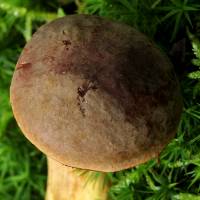 |
CapThe cap surface of Xerocomellus pruinatus remains felted throughout its development. The caps of young specimens are mid to dark brown, sometimes with a purplish tint, and they are covered in a hoary bloom that is gradually lost as the cap expands and the fruitbody ages. Growing to between 4 and 8cm in diameter, the caps have firm, pale flesh that turns slightly blue when cut. |
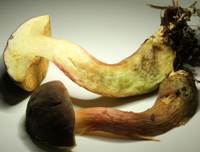 |
StemThe yellow stem of Xerocomellus pruinatus is usually finely patterned with red dots, most noticeably on the central and lower parts of the stem. The stem flesh is bright yellow, blueing slightly towards the stem base. |
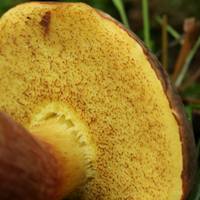 |
Tubes and PoresAt first pale yellow, the tubes of Matt Boletes terminate in large angular pores that turn blue-green when bruised. The colour change is sudden and most marked in mature specimens, and a deep blue stain is left on the hands. |
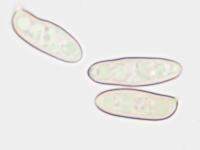 |
SporesSubfusiform (Broadly spindle-shaped), smooth; 11.5–14 x 4.5–5.5µm. Spore printOlivaceous-brown. |
Odour/taste |
Not distinctive. |
Habitat & Ecological role |
In mixed woodland; particularly common under beech trees. The best place to look for Matt Boletes is under Beech trees (Fagus spp.), particularly in parkland but also in beechwoods on limestone or chalk-rich soil. |
Season |
August to November in Britain and Ireland. |
Similar species |
Boletus chrysenteron, the Red Cracking Bolete, can be similar when young but its caps soon lose their surface bloom and they develop cracks when fully developed. |
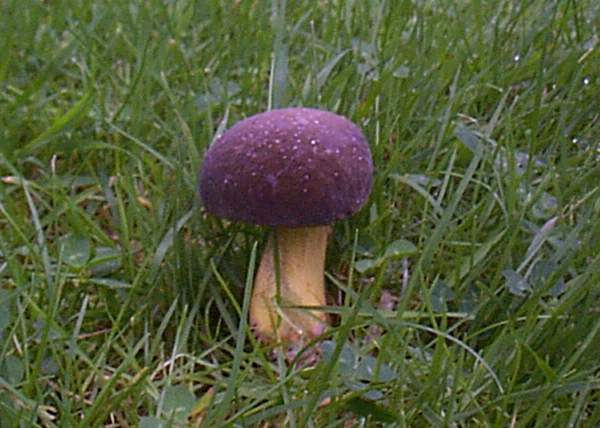
Culinary Notes
Xerocomellus pruinatus is generally considered edible, but it is regarded as a 'poor' mushroom. It is unlikely that you will find sufficient of this smallish bolete to tempt you into creating a special recipe that makes the most of its mediocrity.
Reference Sources
Fascinated by Fungi, 2nd Edition, Pat O'Reilly 2016, reprinted by Coch-y-bonddu Books in 2022.
British Boletes, with keys to species, Geoffrey Kibby (self published) 3rd Edition 2012
Roy Watling & Hills, A.E. 2005. Boletes and their allies (revised and enlarged edition), - in: Henderson, D.M., Orton, P.D. & Watling, R. [eds]. British Fungus Flora. Agarics and boleti. Vol. 1. Royal Botanic Garden, Edinburgh.
BMS List of English Names for Fungi
Dictionary of the Fungi; Paul M. Kirk, Paul F. Cannon, David W. Minter and J. A. Stalpers; CABI, 2008
Taxonomic history and synonym information on these pages is drawn from many sources but in particular from the British Mycological Society's GB Checklist of Fungi.
Hills, A.E. The genus Xerocomus. A personal view, with a key to the British species. – Field Mycology 9(3): 77–96; 2008.
Acknowledgements
This page includes pictures kindly contributed by David Kelly.
Fascinated by Fungi. Back by popular demand, Pat O'Reilly's best-selling 450-page hardback book is available now. The latest second edition was republished with a sparkling new cover design in September 2022 by Coch-y-Bonddu Books. Full details and copies are available from the publisher's online bookshop...
